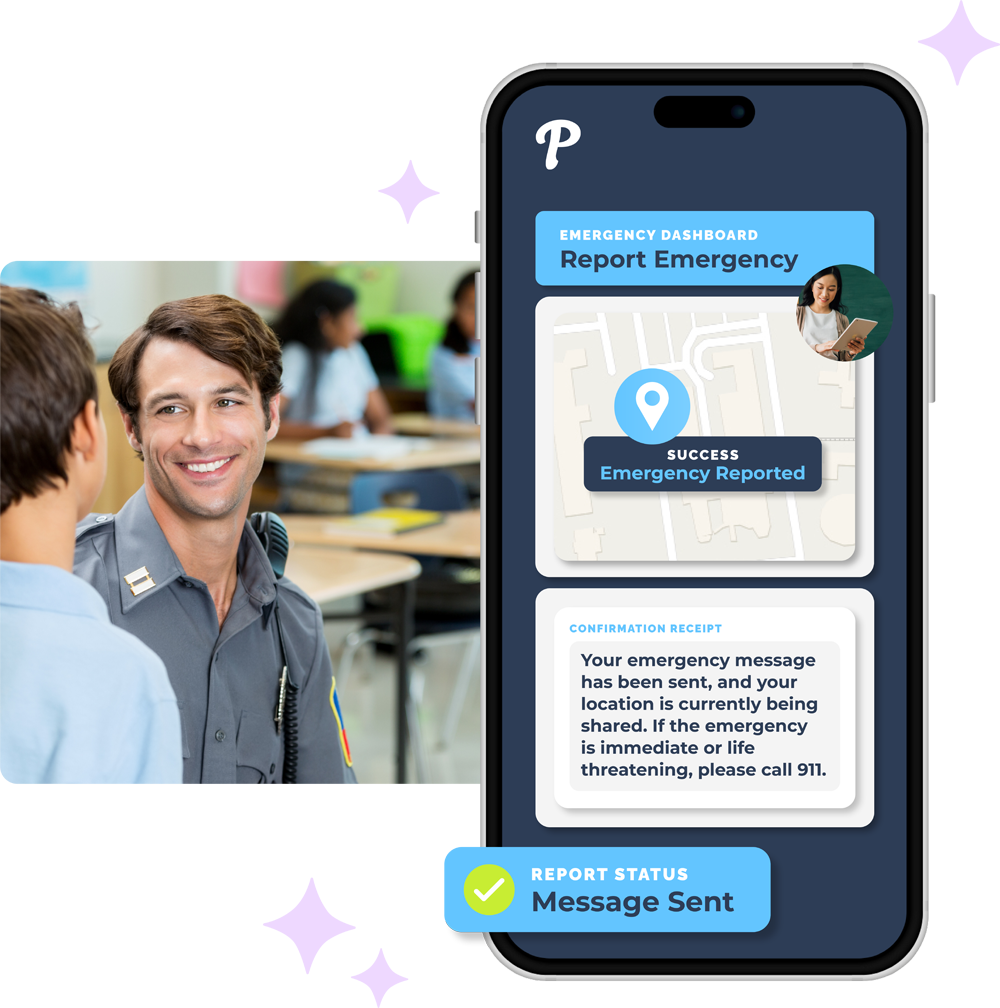In today’s fast-moving educational landscape, schools face constant pressure to adapt to evolving technology. Institutions that fail to embrace new tools risk falling behind in student engagement and instructional effectiveness. Fortunately, modern platforms provide administrators with the resources needed to stay ahead of evolving tech trends while supporting teachers and students in meaningful ways.
The Role of Artificial Intelligence in Education
One of the most significant developments shaping K-12 education is artificial intelligence (AI). AI tools allow educators to personalize instruction, automate grading, and deliver predictive insights for student success. By integrating AI into classroom workflows, schools can anticipate learning gaps and provide targeted interventions before students fall behind. Platforms like Pikmykid ensure schools have the technology foundation to implement AI responsibly while maintaining focus on safety and engagement. For a deeper dive into AI-driven EdTech, see our guide on embracing evolving technology.
Why Learning Management Systems Are Critical
Learning management systems (LMS) are another cornerstone of modern education. These platforms centralize lesson plans, assessments, and student progress tracking, giving teachers more time for instruction and mentorship. A robust LMS allows administrators to monitor curriculum adoption, track engagement metrics, and ensure compliance with educational standards. By investing in scalable LMS solutions, schools can stay ahead of evolving tech trends while streamlining workflows for both staff and students.
Enhancing Engagement with Interactive Learning
Interactive learning environments are also transforming how students experience education. Tools like smart boards, digital simulations, and gamified content create immersive learning experiences that encourage participation and critical thinking. Students exposed to these tools often demonstrate higher retention and stronger problem-solving skills. Schools that leverage interactive technologies can create a culture of engagement while preparing students for the digital world beyond the classroom.
Seamless Communication and Collaboration
Keeping up with EdTech also requires seamless communication and collaboration. Platforms that integrate AI, LMS, and interactive tools with real-time communication systems empower educators to respond quickly to changes in classroom dynamics. This integration reduces administrative friction, enhances parental engagement, and ensures student progress remains visible at every stage. By adopting these connected solutions, schools can maintain operational efficiency while staying ahead of evolving tech trends.
Ensuring Data Security and Privacy
Data security is another critical aspect of adopting new educational technologies. As schools embrace AI and LMS solutions, protecting sensitive student information must be a top priority. Secure platforms ensure compliance with federal and state regulations while enabling educators to access actionable insights safely. By choosing tools with robust security features, administrators can confidently implement new technologies without compromising trust or safety.
Investing in Professional Development
Professional development is essential for maximizing the impact of emerging technologies. Teachers need targeted training to understand how AI, LMS, and interactive tools enhance learning outcomes. Schools that invest in ongoing staff development ensure technology adoption is not just a superficial upgrade but a transformative experience. Platforms that offer built-in guidance, tutorials, and analytics help educators translate new tools into meaningful classroom practices.
The Benefits of Staying Ahead
The benefits of staying ahead in EdTech extend beyond operational efficiency. Schools adopting forward-thinking technology demonstrate a commitment to innovation that resonates with parents, staff, and students. This proactive approach can enhance school reputation, improve student retention, and attract families seeking a modern learning environment. By continuously evaluating emerging trends, administrators can prioritize investments that provide measurable educational and operational value.
Fostering Student Engagement Through Technology
Student engagement is increasingly tied to technology integration. Platforms that support interactive lessons, collaborative projects, and AI-powered feedback provide students with a dynamic learning environment. These tools empower learners to take ownership of their education while helping teachers identify and address challenges in real time. Schools that implement these solutions effectively can create a more responsive, personalized learning experience.
Promoting Digital Equity and Accessibility
Digital equity is a critical consideration when implementing new technologies. Schools must ensure that AI, LMS, and interactive platforms are accessible to all students, regardless of socioeconomic status. Equitable access promotes inclusion, reduces achievement gaps, and ensures every learner benefits from innovations in EdTech. Platforms that simplify deployment and device management support administrators in creating fair and inclusive educational environments.
Strengthening Parental Involvement
Parental involvement is also strengthened through advanced educational technology. Platforms that connect families to learning management systems and real-time updates enable parents to track assignments, communicate with teachers, and engage in student progress. This transparency fosters trust and helps create a unified community focused on student success. Tools designed with parental usability in mind make it easier for families to engage without creating additional administrative burdens.
Using Data to Guide Technology Decisions
Evaluating technology adoption through data-driven insights ensures schools prioritize tools that deliver measurable outcomes. Platforms with robust analytics help administrators monitor student engagement, teacher performance, and technology ROI. These insights guide strategic decisions, allowing schools to adapt quickly to evolving trends and maximize educational impact. By leveraging analytics, institutions can demonstrate the tangible benefits of investing in modern technology.
Leveraging Scalable, Cloud-Based Solutions
Schools also benefit from scalable, cloud-based solutions. Cloud platforms reduce the need for extensive on-premise hardware, minimize downtime, and support remote learning initiatives. Scalability ensures that as student populations grow, technology infrastructure can expand seamlessly. Choosing cloud solutions positions schools to quickly adopt innovations without major operational disruptions, reinforcing their ability to stay ahead of evolving tech trends.
Promoting Collaboration Across Teams
Collaboration between IT departments, teaching staff, and administrators is crucial for successful technology integration. Coordinated planning ensures smooth implementation of AI, LMS, and interactive tools while minimizing workflow disruption. Schools that foster cross-functional collaboration can anticipate challenges, allocate resources effectively, and maintain a consistent focus on learning outcomes. Strong collaboration also supports professional growth and continuous improvement across teams.
Exploring Emerging Trends: VR and AR
Emerging trends like virtual and augmented reality are redefining experiential learning. VR and AR applications provide immersive lessons in subjects like science, history, and art, making complex concepts tangible. These technologies spark curiosity and inspire creativity, enhancing both understanding and retention. Schools that adopt VR and AR responsibly can create captivating learning experiences while maintaining alignment with curriculum goals.
Automating Administrative Tasks
Automated administrative tools further free educators to focus on instruction rather than routine tasks. AI-driven scheduling, attendance tracking, and communication systems reduce administrative overhead while improving accuracy. These solutions allow staff to devote more time to student engagement, curriculum development, and personalized learning. By implementing these tools, schools can stay ahead of evolving tech trends while optimizing operational efficiency.
Engaging the Wider Community
Community engagement also benefits from technology integration. Platforms that share updates, safety alerts, and educational resources help build stronger relationships with local stakeholders. Technology that connects schools to their wider communities encourages participation, volunteerism, and collaborative problem-solving. Schools embracing these tools demonstrate transparency and responsiveness, reinforcing their role as community leaders.
Embracing a Culture of Continuous Improvement
Adapting to new EdTech trends requires a culture of experimentation and continuous improvement. Schools that pilot innovative tools, gather feedback, and iterate on implementation are better positioned to respond to changing student needs. This mindset encourages teachers to explore new teaching methods, administrators to optimize workflows, and students to embrace learning as a dynamic process. Platforms supporting rapid iteration and user feedback accelerate this adaptive approach.
Integrating New Technology with Existing Systems
Integration with existing systems is essential for maximizing the value of new technology. Platforms that connect AI, LMS, and interactive tools with existing SIS, communication, and safety systems reduce duplication, enhance data accuracy, and streamline reporting. Seamless integration ensures administrators have a unified view of operations, helping them make informed decisions quickly and confidently.
Achieving Cost-Effective Technology Adoption
Cost-effectiveness is another critical factor in technology adoption. Platforms that consolidate tools, minimize hardware requirements, and offer scalable subscriptions allow schools to maximize value while managing budgets effectively. Administrators can prioritize solutions that deliver both educational and operational benefits, ensuring sustainable technology adoption.
Preparing Students for the Future
Finally, staying ahead of EdTech trends is about preparing students for the future. Exposure to AI, LMS, interactive platforms, and emerging technologies equips learners with skills necessary for higher education and workforce readiness. Schools that embrace modern educational technology demonstrate foresight, fostering a culture of innovation and lifelong learning.
Leading with Technology and Innovation
By focusing on AI, LMS, interactive learning, and integrated communication, schools can confidently stay ahead of evolving tech trends. Proactive planning, professional development, and thoughtful implementation ensure that technology adoption translates into meaningful outcomes. With the right platform, administrators can create a safe, engaging, and innovative environment for students while simplifying operations for staff.
Embracing EdTech is not optional; it is a necessity for schools aiming to provide equitable, effective, and engaging learning experiences. Platforms designed to support AI, LMS, and interactive learning environments offer schools the tools, insights, and guidance needed to thrive. By investing in these technologies, administrators can lead with confidence



